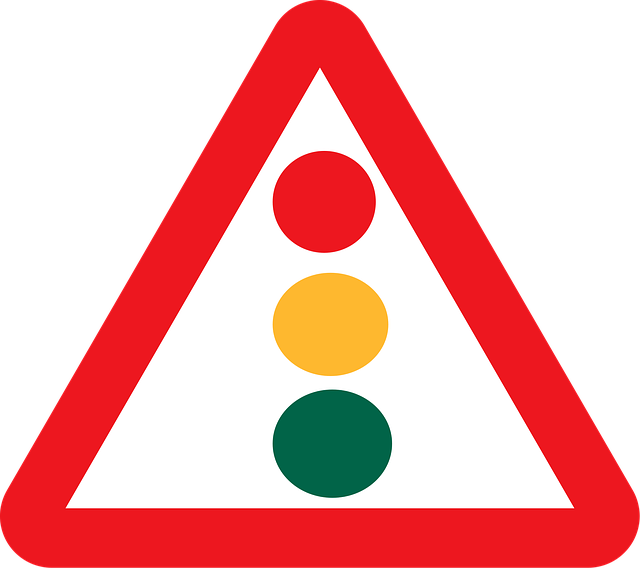Traffic signs and signals are indispensable tools for maintaining road safety by offering critical guidance to drivers and pedestrians. Ignoring these rules and signs can lead to severe consequences, including accidents, injuries, and fatalities. Understanding and adhering to traffic regulations, such as speed limits, lane changes, and pedestrian crossings, is essential for responsible driving. By following Select Road Safety Tips, like respecting speed limits, yielding to pedestrians, and maintaining good lighting conditions, drivers can significantly reduce accident risks, enhance overall road safety, and foster a culture of secure and predictable travel for all.
Respecting traffic rules and understanding road signs is a fundamental aspect of responsible driving. This comprehensive guide explores the Select Road Safety Tips, emphasizing the significance of adhering to signs for your safety and that of others. From comprehending basic signals to navigating complex situations, we’ll cover everything you need to know to stay safe on the roads. By the end, you’ll be equipped with the knowledge to foster a culture of responsible driving.
- Understanding Traffic Signs and Their Importance
- The Impact of Ignoring Road Rules
- Key Traffic Signals You Should Know
- Staying Safe: Best Practices for Following Rules
- Encouraging a Culture of Responsible Driving
Understanding Traffic Signs and Their Importance

Traffic signs are crucial components of road safety, serving as visual cues to guide both drivers and pedestrians. Understanding these signs is essential for everyone on the road. Each sign conveys specific information about speed limits, lane changes, turns, stop or yield requirements, school zones, and more. By adhering to traffic signs, we not only ensure a smoother flow of traffic but also protect ourselves and others from potential accidents.
When driving, it’s important to pay close attention to road signs, including those related to pedestrians’ rights at crosswalks and signals, maintaining safe following distances in traffic, and recognizing the signs of fatigued drivers and their remedies. By respecting these rules, we can navigate our roads more safely and responsibly, making our communities better places for everyone. Select Road Safety Tips are invaluable tools for all road users, promoting a culture of safety that saves lives.
The Impact of Ignoring Road Rules

Ignoring traffic rules and road signs can have severe consequences and significantly impact road safety. When drivers disregard speed limits, fail to yield to pedestrians, or run red lights, it increases the risk of accidents and puts not only themselves but everyone around them in danger. These reckless actions contribute to a culture of irresponsible driving, leading to emergencies on the highway and potential life-threatening situations.
For instance, the dangers of distracted driving statistics reveal alarming trends. Texting while driving or engaging in other mobile device activities diverts a driver’s attention away from the road, extending reaction times and compromising judgment. As a result, accidents caused by driver inattention have led to severe injuries and fatalities. By adhering to road rules, including following traffic signs, drivers can actively contribute to preventing such emergencies and ensuring a safer driving experience for all. Choosing to obey traffic laws is not just a responsibility but a vital road safety tip that could save lives.
Key Traffic Signals You Should Know

Key Traffic Signals You Should Know
Understanding and heeding traffic signals is a fundamental aspect of road safety. Among these, stop signs, yield signs, and traffic lights are among the most critical. Stop signs require drivers to come to a complete halt before proceeding, ensuring no obstruction to other vehicles or pedestrians. Yield signs, on the other hand, instruct drivers to slow down and be prepared to stop if necessary, giving way to traffic on the main road. Traffic lights signal when it’s safe to move, usually indicated by green, and when a pause is required, signaled by red.
For those navigating narrow or winding roads, extra caution is advised. Tips for navigating these routes safely include maintaining a lower speed, increasing your following distance from other vehicles, and being prepared to brake suddenly. Additionally, solo drivers on highways should make use of highway rest areas for breaks and ensure their vehicle is in good condition, incorporating safety tips like correct car seat installation (especially for children) as part of their routine maintenance.
Staying Safe: Best Practices for Following Rules

Staying safe on the roads is paramount, and adhering to traffic rules is a cornerstone of responsible driving. When it comes to ensuring road safety tips, following signs is an essential practice that can prevent common traffic accidents. Every sign on the road has a purpose—to guide, warn, or instruct drivers—and ignoring them can have serious consequences.
Paying close attention to speed limits and road signs, including those indicating construction zones, school areas, and pedestrian crossings, significantly reduces the risk of accidents. Remember that following traffic rules, such as yielding to other vehicles and pedestrians, is not just about avoiding penalties; it’s about prioritizing airbag safety during unexpected events and ensuring roadside assistance essentials are readily available in case of emergencies.
Encouraging a Culture of Responsible Driving

Encouraging a culture of responsible driving starts with adhering to basic road safety tips and following traffic signs. Drivers who respect speed limits, yield to pedestrians, and maintain safe following distances contribute significantly to reducing traffic congestion and enhancing overall road safety. By prioritizing these simple yet vital practices, we can create a more predictable and secure driving environment for everyone on the road.
Additionally, drivers should employ low-light visibility enhancement techniques for drivers during early morning or evening commutes, as well as when navigating through unfamiliar terrain. Adjusting headlights appropriately, using reflective gear, and maintaining good lighting conditions help mitigate risks associated with reduced visibility. These practices are not just Road Safety Tips; they are essential coping strategies for long drives that can prevent accidents and save lives.
Respecting traffic rules and understanding common road signs are essential components of responsible driving. By following these guidelines, you contribute to your safety and that of other road users. Implementing these select road safety tips can help foster a culture of mindful and considerate driving, ultimately reducing accidents and promoting a smoother, safer journey for everyone on the roads.
